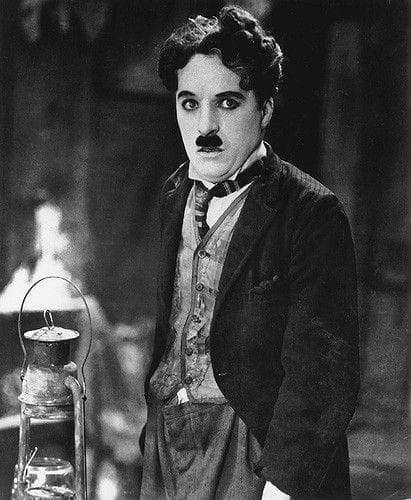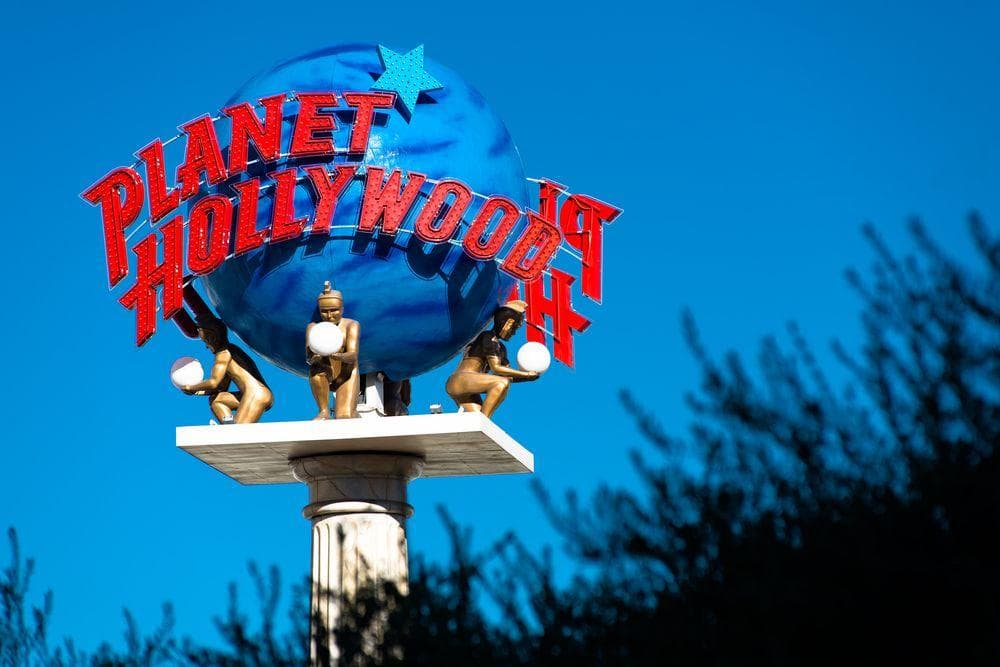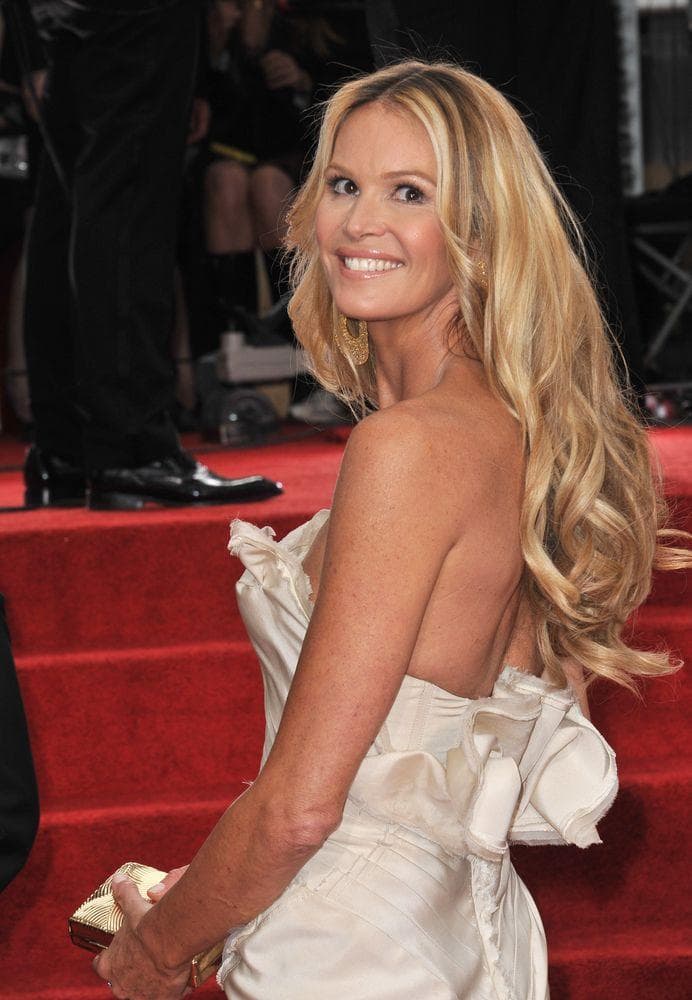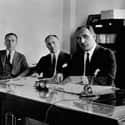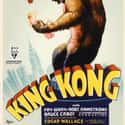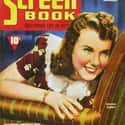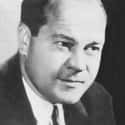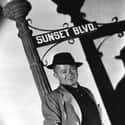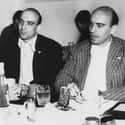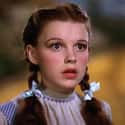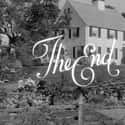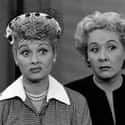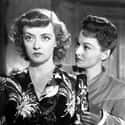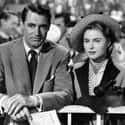-
(#1) The Big Five And Little Three Studios Dominated Hollywood
Five studios emerged from the silent film era of the 1920s to to dominate American cinema. Those studios, known as The Big Five, were: MGM, Warner Bros, 20th Century Fox, RKO, and Paramount. Various other studios and production companies clamored for a piece of the pie. The three others that ate at the big boy table, known as The Little Three, were Universal, United Artists, and Colombia.
-
(#2) The Men Behind The Big Five Were Jewish Immigrants With A Background In Theater
Jewish immigrants Adolph Zukor, Louis B. Mayer, and brothers Harry, Albert, Samuel, and Jack Warner came to Hollywood when the vaudeville and burlesque circuit began to flag in the Northwest. They owned theaters that attracted working class immigrants and first generation Americans.
They chose Hollywood for several reasons. California was as far as they could get from Thomas Edison, who was more than happy to sue filmmakers for patent infringement. They also came for the weather. The warm and practically rainless climate allowed for longer production time, particularly inland from the coast. The terrain mirrored many other national and even international locations, and the light is perfect for filming.
The biggest reason they choose film over theater, though, is very simple: it was more profitable.
-
(#3) Block Booking
Studios sold films to theaters in blocks. A standard block contained of 20 or more features, one of which was a high quality picture with broad appeal, the rest of which were a grab bag of B-movies of varying quality. Theater owners weren’t fans of the block system, because it ate up the majority of the playbill for the year, but they had to go along in order to get the biggest films each year.
In many cases, when theater owners bid on block from a studio, some films included weren't even made yet. Because of this, programmers had no idea how bad a picture might be. What's more, if the final product differed from descriptions provided by the studio, programmers would have no idea to whom the project might appeal and how to promote and schedule it. Theaters were also required to take short films, which were tacked onto features. Block booking was a major impediment to theater owners meeting the taste of clientele.
On top of this, the Big Five owned controlling stakes in theater chains, which were exempt from block booking, and therefore would only show the best, most commercially successfully and high quality films. This cut into the business of theaters lashed to the block system.
-
(#4) War Was A Huge Boost For The Studio System
World War 1 exploded the American film industry. The public wanted stories and escape from their lives, yet also craved news from the front, which theatrical newsreels provided. Public demand led to technological advances, while Hollywood’s competition, European cinema, had a hard time getting much done with all the fighting going on.
Hollywood stars were a huge part of the war effort during WWII. Bette Davis headed up the Hollywood Canteen, where stars Marlene Dietrich, Rita Hayworth, Clark Gable, Merle Oberon, Judy Garland, Cary Grant, and Mickey Rooney entertained the troops. Clark Gable, Jimmy Stewart, Marlene Dietrich, and Leslie Howard even joined the armed forces, and Dietrich was awarded the Presidential Medal of Freedom.
-
(#5) The Hays Code Was A Self-Censorship System Created To Avoid Federal Interference
Formally known as The Motion Picture Production Code, the Hays Code was put in place in 1930 but not strictly enforced until 1934. The code was a way for the studios to self-censor in answer to the government’s threat to ban films the public might deem offensive and morally unacceptable.
Pre-code films were far racier and more tolerant than post-code films. Sexuality, nudity, feminism, and gay characters were part of the cinematic landscape before the code was enforced. Will H. Hays was president of the Motion Picture Producers and Distributors of America when the code was adopted, hence the name, but it was more closely associated with Joseph Breen, who was appointed by Hays to enforce it.
The code drastically changed American cinema by banning sex, pregnancy, and promiscuity, upholding the sanctity of marriage, and adding twin beds in the budoir. The code also banned biracial relationships and gay characters. Villains couldn’t get away with murder. Violence was squelched or sanitized.
The American happy ending was born. Meanwhile, in Europe, characters had angst, were betrayed, and pondered real life issues where a happy ending was never guaranteed. The upside of the Hays Code? It created snark. Many took direct shots at the code, mocking it outright.
-
(#6) The Talent Scout System Was Wide Ranging And Ravenous
Hollywood talent scouts searched for fresh talent on Broadway, vaudeville, and radio. They were on the lookout for a fresh face just about anywhere, including the street.
In 1936, someone (by some accounts The Hollywood Reporter founder William R. Wilkerson, by others a talent scout) spotted 15-year-old Julia Jean Mildred Frances Turner drinking a soda outside a shop in Hollywood after she ditched a typing class. She was approached, brought to Marx Brother Zeppo (who was an agent as well as an actor) once her parents approved of the situation, signed with him in 1937, and cast in They Won’t Forget.
Turner was an instant success, not because of her talent (she had no lines and was killed off pretty quickly), but because of her tight skirt and chest-hugging sweater. Turner, who chose Lana as her first name, was known as the “Sweater Girl.”
Turner said of her studio years
”It was all beauty and it was all power. Once you had it made, they protected you; they gave you stardom. The ones who kept forging ahead became higher and higher and brighter and brighter and they were stars. And they were treated like stars. We had the best."
-
(#7) Stars Had To Look Good (The Studio Took Care Of The Rest)
The average actor’s contract ran for seven years, on account of the De Havilland Law. Actors performed in whatever films the studio desired. Studios also loaned actors to other studios without consent or permission, sometimes as punishment for misbehavior on the actor's part. Actors of all types were under contract; lead, supporting, and extras. And all casting was typecasting.
Looks-over-talent was Hollywood's philosophy. An actor was groomed, chiseled, and molded to have a screen presence. They were given diction lessons and schooled on posture, and took horseback riding, fencing, and dance lessons. Appearance was hugely important. Weight maintenance was standard in contracts. Physical fitness was strictly enforced. What couldn’t be worked off was surgically altered. If a nose was too big, a chin too wide, plastic surgery was a given.
“A star is made, created; carefully and cold-bloodedly built up from nothing,” said Louis B. Mayer. “All I ever looked for was a face. If someone looked good to me, I'd have him tested. If a person looked good on film, if he photographed well, we could do the rest.”
-
(#8) Studios Owned Their Stars And Controlled Their Personal Lives
The studio controlled every aspect of a star’s life. From how they spent their private time to who they dated, married, and pretty much every other aspects of their personal lives. If an actor had an affair, got pregnant, had a drug or alcohol problem, or a child out of wedlock, the studio made it a high priority to deal with it and keep that knowledge from the public.
If an actor was gay, that knowledge was closely guarded. Actors stayed in the closet and were regularly forced into cover marriages. Crimes and misdeeds were covered up. The studios worked with law enforcement and the press to keep things under wraps.
-
(#9) Studio Fixers Like Eddie Mannix Helped Stars Avoid Trouble With The Law
If you've seen Hail, Caesar, you know all about Eddie Mannix (pictured), an infamous studio fixer of old Hollywood. He got stars out of trouble by whatever means necessary. He helped Joan Crawford out of a spot of bother, perhaps with the assistance of the mob, when some extortionists came upon a copy of a lesbian porn film she made before becoming famous.
The following story from Clark Gable by Warren G. Harris demonstrates the extent to which studios went to protect stars. It also debunks the long-held rumor that Gable hit and killed someone. It's a long story, but worth the read.
“In March [1945] Gable’s heavy drinking finally caught up with him. While driving home from a party celebrating the American victory on Iwo Jima, he lost control of the car as he passed through the Bristol Circle, a dense tree-filled traffic island on Sunset Boulevard in residential Brentwood in West Los Angeles. It being around four o’clock in the morning, there may have been no eyewitnesses to what actually happened. But MGM publicists and security chief Whitey Hendry got to the accident scene before it was reported to the police or press.
[MGM publicist] Howard Strickling later claimed that Gable crashed into a tree on the front lawn of Harry Friedman, a talent agent for MCA. According to Strickling, Friedman knew enough about the industry’s penchant for secrecy to phone MGM instead of the cops.
‘It wouldn’t have been good if a photographer arrived and snapped Clark Gable lying on the lawn covered with blood and his car all cracked up, Strickling said. After a studio doctor arrived to patch up Gable, he was taken to Cedars of Lebanon Hospital, and the wrecked car was quickly towed away.
At the hospital Gable required ten stitches for head and shoulder wounds and was detained for ‘observation.’ He was in a drunken stupor and kept threatening to walk out, so all his clothes were taken away to lessen the chances. He spent the next three days in isolation, being thoroughly dried out.
The press had so many informants at Cedars of Lebanon that Gable’s presence became known within minutes. Amusingly, the story handed out by MGM was that Gable’s car had been sideswiped by a drunken driver who immediately sped away! Nobody believed it, but it got printed and also started rumors of what really happened. One of the more extreme had Gable killing a pedestrian and MGM persuading one of its minor executives to take the rap for him! After ‘confessing’ that he had really been driving the car and Gable was only a passenger, the exec supposedly served a year in jail for manslaughter, after which MGM rehired him with a whopping pay increase and pension plan.”
-
(#10) Gossip Columnists Damaged Reputations, Ruined Careers, And Got Information Direct From Studios
One of the many ways studios controlled stars and their images was through the powerful poison pens of gossip columnists Hedda Hopper, a former actress, and Louella Parsons. Hopper's and Parsons’s careers were completely dependent upon information studios gave them.
Examples of their handiwork include Hopper’s frequent negative coverage of Charlie Chaplin over his politics, controversial paternity suit, and marriage to an 18-year-old when he was 54. Her work contributed to Chaplin being prevented from entering the United States in 1952. Parsons also ruined Ingrid Bergman’s clean image by revealing her affair with Roberto Rossellini (they eventually married).
Hopper and Parsons feuded with each other as well. The two were friends, but the studios made turned them into bitter enemies, pitting them against each other as they did stars such a Bette Davis and Joan Crawford. The goal was control and it was very effective.
New York University professor Moya Luckett explained to Vanity Fair, “What they did in some ways was more difficult than what we have today—they were very sophisticated in making it look like there was independent reportage and there was a possibility for truth to be obtained by journalists like Hopper and Parsons.”
-
(#11) Studios Operated A Bit Like Factories, And Had Key Creative Personnel Employed At All Times
The studio system was designed to churn out as many films as possible, assembly line-style. Studios produced a film each week, and by 1939, the United States had as many as 15,000 movie screens nationwide, all of which needed filling. Studios developed unique styles across a range of genres to establish a brand and to attract a loyal audience.
The volume of output required serious coordination and collaboration. Writers, directors, cinematographers, and other such talent were employed by studios, rather than working freelance, as they do in the 21st century. This created an ideal environment for collaboration, as writers, directors, and producers could drop in on one whenever they wanted to develop ideas or work on material. A director could be working with a writer on one script while directing another just a short walk away, at the same studio.
This system allowed studios to keep projects afloat if scheduling conflicts or other issues resulted in certain key personnel dropping out. If your star director couldn't work on the new script by your star writer, no big deal, because your other star director was under contract and at the studio every day, and would be more than willing to take over. This wasn't always true - in some cases, directors were co-writers on projects and insisted on seeing them to fruition.
Though the system was guilty of countless moral infractions, it obviously worked from a creative stand point - the quality of American films dipped significantly when the system fell apart.
-
(#12) Studio Writers Developed Modern American Screen Narrative And Churned Out Huge Amounts Of Material
A huge demand for scripts meant a need for writers, who streamed into Tinsel Town from all other the country and world, and from all walks of life. Hollywood attracted novelists such as William Faulkner, F. Scott Fitzgerald, and Raymond Chandler. But the system relied on writers who could churn out content on a daily basis, not literary powerhouses who demanded a huge payday. The screenwriters who did well generated good material quickly. These writers also developed the basic screenwriting precepts still used today.
Sequences, for instance. Sequences are the building blocks of scripts as per a number of philosophical approaches to screenwriting. Writing a script as a series of sequences was developed during the studio era in part because screenwriters wrote interconnected scenes to the length of a single reel of film, which ran about 10 minutes. Scripts from the studio era also included technical direction and camera blocking, an understanding of which helped screenwriters to more easily transition to directing.
Pat McGilligan interviewed 15 of the top screenwriters from the studio era for his book Backstory: Interviews With Screenwriters of Hollywood's Golden Age. Julius J. Epstein (Fanny, Casablanca) recounted just how quickly he was thrown into the mix after arriving in Los Angeles from New York.
"I came out on Friday and landed in the railroad station at 10 o'clock at night. Oct. 14, 1933. Twelve o'clock that night I was ghostwriting for two desperate people who shall remain nameless, because they had to take some stuff in (to Warner Bros.) on Monday and they had nothing to turn in. Sunday, one of them took me downtown to the Paramount Theatre--I think it was College Humor (1933) with Bing Crosby and Mary Carlisle. He said, 'That's a fade-out. That's a dissolve. That's an iris-down! That was my education in screenwriting. I think it's all you need.”
Epstein learned how to write scripts by reading scripts. He also wrote an original story every night.
“In those days you didn't have to write a screenplay to sell, you could do 10 or 20 pages of an idea. In about nine months one sold to Warners. I came in October and sold something in August. After a week Warners put me on a seven-year contract, and I was there under two seven-year contracts."
His twin, Philip, was also a writer, and the two wrote Casablanca together. They were notorious pranksters - when the Epsteins were reported to the House Un-American Activities Committee in 1952, they filled out paperwork which asked whether they belonged to a subversive organization, in response to which they wrote, “Yes. Warner Brothers.”
-
(#13) Abortions Were Illegal, And Performed Frequently
Even though abortion was illegal, studios wouldn't let a contract player’s unplanned pregnancy get in the way of a production or cause scandal and subsequent harm to their brand. A pregnant, unmarried star also found herself in violation of the Hays Code. “Abortions were our birth control,” an anonymous actress told Vanity Fair.
“[I]t was a common assumption that glamorous stars would not be popular if they had children,” Cari Beauchamp wrote in her book Without Lying Down.
The pill and condoms were relatively new and young stars struggled with sudden fame. “These newly wealthy men and women didn’t know how to control their money, their bodies, or their lives, spending, cavorting, and reveling in excess,” writes Anne Helen Petersen in Scandals of Classic Hollywood.
Biographer Lee Israel said of Tallulah Bankhead in his book Miss Tallulah Bankhead that the actress got “abortions like other women got permanent waves.” Judy Garland was forced to have two abortions after she married David Rose. Her mother sided with the studio and pushed for the procedures.
-
(#14) United States v. Paramount Pictures
In 1948, the Supreme Court outlawed block booking and forced the Big Five to sell their theater chains, having deemed them in violation of antitrust laws. Studios were forced to produce higher-quality films, since theater programmers earned the right to be picky about what they screened. Studios couldn’t dump a raft of B movies on the little guys any more and eat up screens for the year.
The decision resulted in increased production budgets and a decrease in the number of films the studios made.
-
(#15) International Cinema, Art House Theaters, And Roberto Rosselini Made The Hays Code Obsolete
By the late ‘40s/early ‘50s, small, independent theaters were more interested in screening foreign and independent films that weren’t hemmed in by the Hays Code than tame Hollywood fare. Increasingly, audiences preferred the gritty and realistic (Neorealism) or experimental and artistic (Bergman, Ozu, Mizoguchi) storytelling of foreign filmmakers to wholesome, water-downed American turd.
In 1952, the Supreme Court determined Italian filmmaker Roberto Rossellini’s controversial picture The Miracle was protected under the First Amendment in Joseph Burstyn, Inc. v. Wilson. The film contained contentious interpretations of Catholic imagery; many believed it mocked the virgin birth of Christ (although, come on, who is anyone to challenge the Italians on Catholicism, except maybe the Irish?).
The Hays Code slowly fell by the wayside, but Hollywood didn't have a rating system in place. Theaters billed potentially controversial films as “Recommended for Adults Only,” which only served to intrigue and attract audiences.
-
(#16) The Rise Of The Little Screen Ended The Hegemony Of Studios
Television gained power as it sucked up newsreels, serials, short subjects, and cartoons usually reserved for the pre-show on the big screens. Late night TV became king. Old movies could be enjoyed in one’s own living room. Even the Silent Era got a boost from TV.
While this helped with Hollywood's exposure, it also effectively ended the studio system's hegemony over filmed American entertainment, and fractured a talent base that could choose between gigs in film and television.
-
(#17) Stars Fought Back, Using Their Fame As Leverage
The ‘50s saw many a battle between stars and studios. Bette David, Olivia De Havilland, Jane Greer, and Marilyn Monroe began refusing roles, going so far as to sue to get out of contracts. New stars took the cue and walked into negotiations well armed.
-
(#18) Studio Power Was Weakend By Agents, Who Carved Up Talent Pools And Freed Creatives From Contracts
When the studio system began, agents swarmed Hollywood, imbedding themselves in every aspect of the business. While they tended to work with studios to cultivate an actor’s career, they were also considered the enemy. Agents had backgrounds in everything from advertising to real estate and banking, and knew how to dig in and fight.
Ultimately, agents won in the battle for control of their clients' careers. Leading stars had power and the studios had to share that power with the actor and agent. Agent-led negotiations on behalf of stars ended the era of contracts and created an environment in which most writers, directors, and actors worked freelance (writers lucky enough to get development deals moved from studio to studio based on who offered what).
Eventually, and somewhat ironically top agencies became their own versions of studios, packing projects with actors and directors, from scripts by clients.
New Random Displays Display All By Ranking
About This Tool
It is not an exaggeration to say that the studio system has created Hollywood’s glory. The old Hollywood studio system is a production model for large companies in American movie history to produce movies. The filmmaker takes the lead and emphasizes the role of the movie stars. The studio system has a decisive influence on the future development of Hollywood.
You must watch lots of Hollywood movies, but most people don't know the facts about how the old Hollywood studio system worked, our generator will help you to get more details, and it has more interesting content, you could search for other things with the tool.
Our data comes from Ranker, If you want to participate in the ranking of items displayed on this page, please click here.

